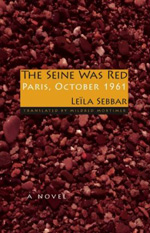

Indiana University Press, paperback, 9780253220233
Paris, 17 October 1961: Tens of thousands of French Algerians descended upon Paris to engage in a peaceful protest against a curfew imposed upon them by Maurice Papon, the infamous Prefect of Police. The curfew was a response to a bombing campaign against the French police by members of the Algerian National Liberation Front (FLN) during their resistance movement near the end of the Algerian war for independence, which took place between 1954 and 1962. Papon, who would later be convicted and imprisoned for his role in the deportation of over 1600 French Jews to concentration camps during the Second World War, vowed to suppress the Algerian resistance once and for all, and planned a coordinated and brutal response against the illegal protest, promising his troops that they would not be prosecuted for their actions. Algerian protesters by the thousands, including women and children, were beaten unconscious or shot, and their bodies were dumped into the Seine, resulting in several hundred deaths. The massacre did not receive much coverage in the French or international press, and historical accounts of the war have suppressed or ignored what happened on that day.
Leïla Sebbar was a 20 year old French Algerian at the time of the massacre, born in Algeria but living in Aix-en-Provence, "where I had forgotten Algeria." After she contributed a small piece about the massacre, entitled "La Seine était rouge", to a journal, Sebbar began further research, and ultimately decided to write a novel based on the events surrounding 17 October 1961.
The Seine Was Red takes place in 1996, 35 years after the massacre, and features three main characters, all young people who were born well after 1961: Amel, a French Algerian woman who attends university at Nanterre; Omer, an Algerian journalist in exile from his home country; and Louis, a Frenchman who films a documentary about les porteurs de valises, the French "suitcase couriers" who clandestinely aided militant Algerians during the war. The three are linked by their mothers, who had come to know each other through their activity in the Algerian resistance movement.
Amel is extremely bright and intellectually curious about the past lives of her mother and maternal grandmother, but is unable to communicate with them fully, as she never learned to speak Arabic. She presses them for information, but is repeatedly rebuffed and told that they will tell her about the massacre "when the time is right." After she is introduced to the older Omer, they attend a showing of Louis' documentary, where she sees her mother on the screen describing the events of 17 October 1961 in detail in front of Louis' camera, events which she had been unable to describe in person to Amel. Omer accompanies Amel to the various places that her mother and others describe in the documentary: Défense, République, the bridge at Saint-Michel where dozens of Algerians were thrown into the Seine, and Orly Airport where hundreds of Algerians were forcibly deported back to their native land. As the two visit these landmarks, which feature memorial plaques to the French who were imprisoned or lost their lives in various resistance campaigns against foreign intruders, the pair create their own lieux de mémoire, places of memory to honor the Algerians who resisted French intruders during the war. Amel also recalls her mother's voice in the documentary as she speaks in front of Louis' camera, along with victims, police participants, and observers of the massacre, to bear witness to the tragic events of that day and the ones that followed.
The Seine Was Red is an essential contribution to postcolonial literature and history; Sebbar uncovers and corrects
the accounts of the Paris massacre of 1961, an episode that was downplayed by the media and covered up by the French
government for nearly 40 years. The translator, Mildred Mortimer, provides an excellent and invaluable introduction
which allows the reader to fully appreciate the book's narrative.
